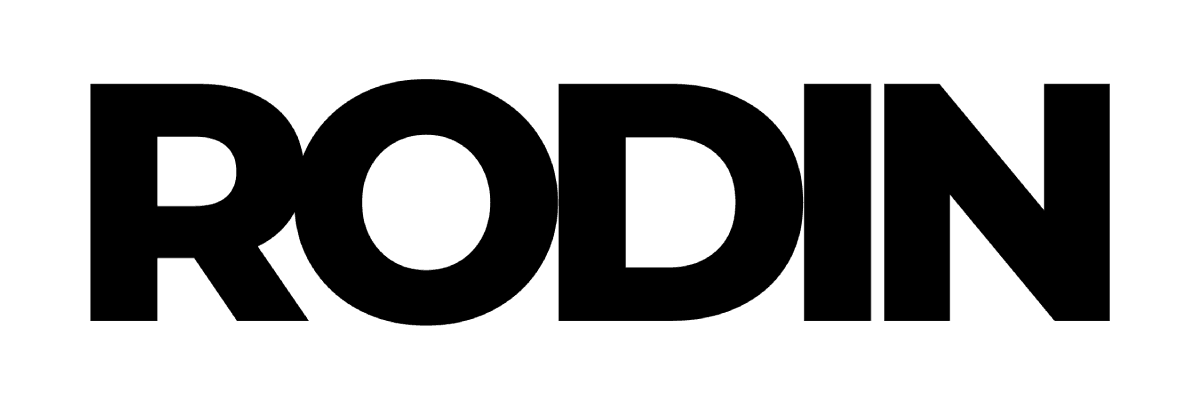PEST analysis (Political, Economic, Social and Technological) is a strategic tool used in marketing to assess the external business environment. This method was developed in the 1960s, and its growing importance in the digital era highlights the dynamic changes in today’s business world. PEST analysis is widely used across various industries and sectors of the economy.
What is PEST analysis in marketing?
PEST analysis is an analytical method that helps a company adapt its actions to a changing business environment, avoid potential threats and identify new opportunities. It improves how an organisation operates and supports faster growth of the business. PEST analysis also plays an important role in strategic planning, as it allows you to anticipate market changes.
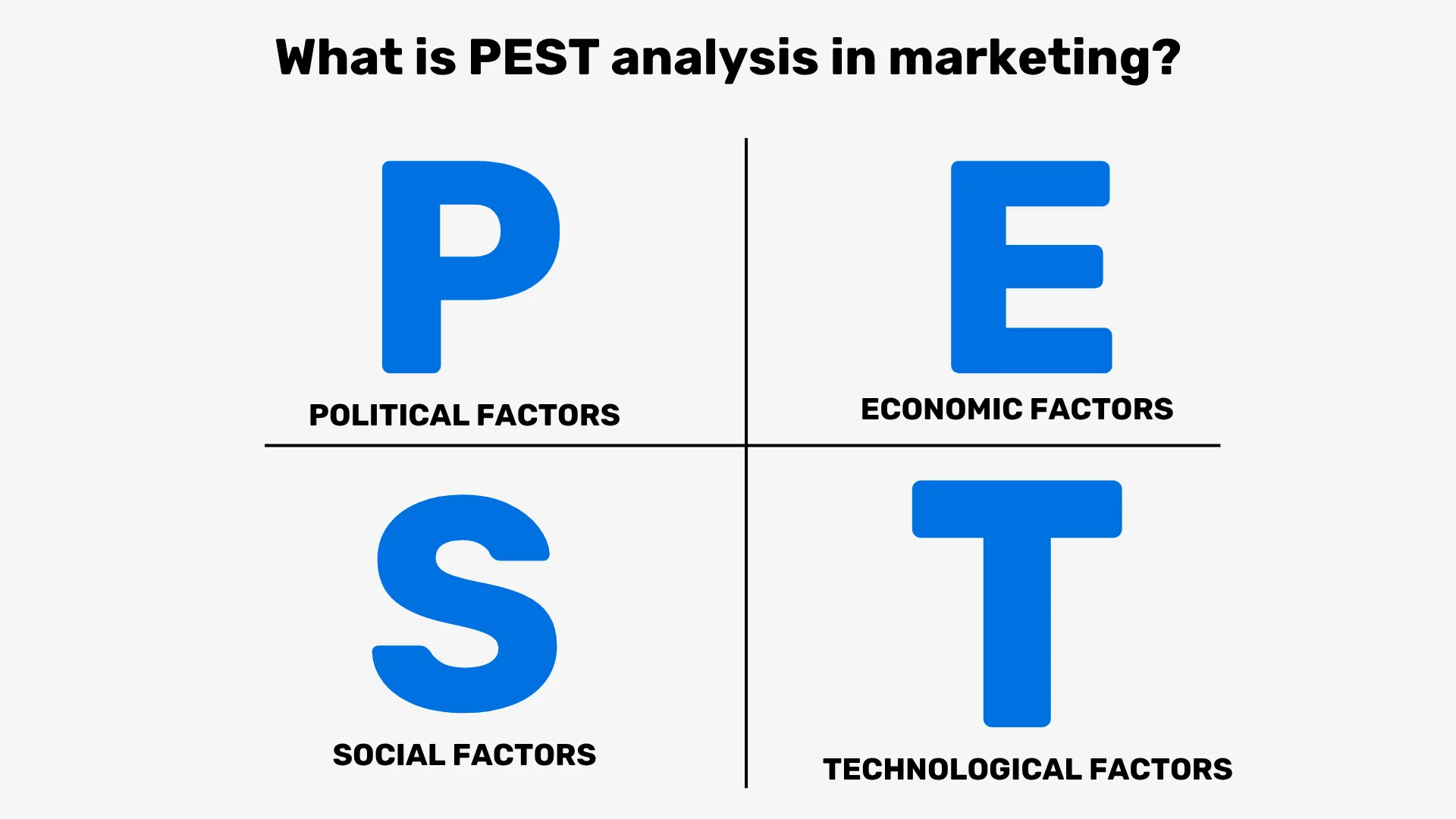
PEST analysis and organisational performance
Carrying out PEST analysis makes it possible to plan and smoothly adapt to new business conditions, and in the digital era, where dynamic changes are inevitable, PEST marketing becomes an indispensable element of planning effective marketing strategies. The pace of economic growth depends on many aspects, and PEST analysis can greatly support this. In addition, PEST analysis allows you to assess the long-term impact of external factors on the company’s development.
When is it worth using PEST analysis?
Creating PEST analysis allows companies to fully understand the business environment and effectively adapt to changing market conditions.
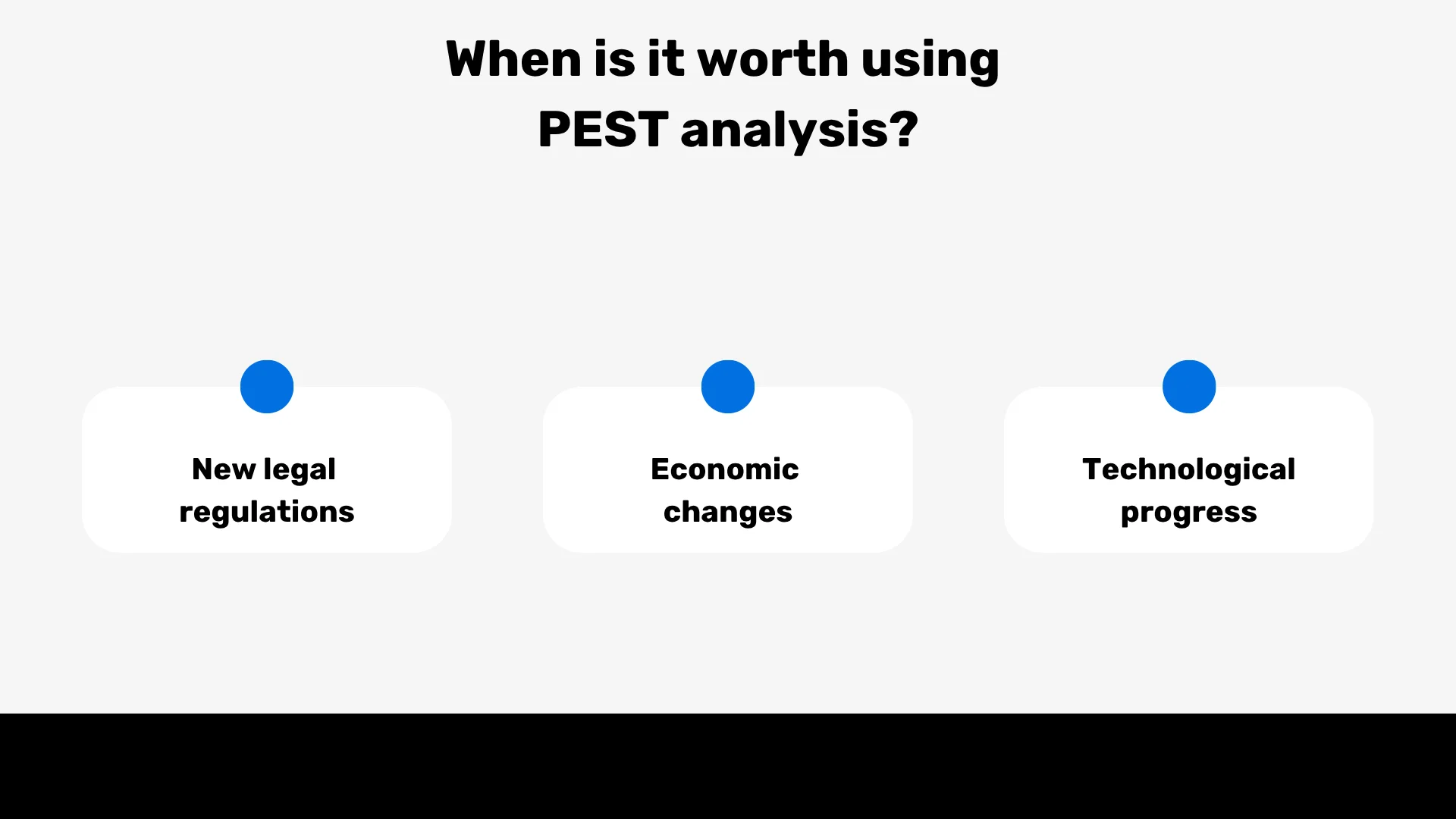
Here are some situations where using PEST analysis can be invaluable:
- New legal regulations – when new regulations and legal requirements are introduced in a given sector, conducting PEST analysis can help entrepreneurs understand how they affect the marketing strategy and what changes are needed to adapt it to the new requirements.
- Economic changes – sudden changes in economic conditions, such as a recession or economic growth, affect customers’ purchasing power. PEST analysis makes it possible to understand these changes and adjust prices, promotions and the offer to the new reality.
- Technological progress – rapid technological development can significantly affect industries such as telecommunications or e-commerce. Company analysis using the PEST method enables the identification of new opportunities arising from technological progress and the adaptation of the marketing strategy to upcoming changes.
In addition, PEST analysis makes it possible to determine the impact of each factor on company operations and strategy, in terms of both strength and duration of impact.
PEST analysis – the best examples
Wondering what a professional PEST analysis looks like in practice? We have prepared two specific examples, focusing on the fashion e-commerce industry and the children’s products industry. The results of PEST analysis show which factors can significantly impact running a business in these sectors.
PEST analysis allows you to look at the business environment from a broader perspective, making it easier to identify opportunities and threats.
We have prepared PEST analysis examples that will help you better understand the theory and show how versatile and useful PEST analysis can be in different business contexts.
Example 1: Children’s products industry
PEST analysis in the children’s sector helps effectively introduce new products that respond to changing market needs.
The children’s products industry is a sector where dynamic development and change are always present. This industry therefore requires a detailed analysis of the business environment. In this context, PEST analysis makes it possible to identify key political, economic, social and technological factors that are highly likely to affect the operations of companies in this industry.
- Political and legal factors: toy safety standards, applicable norms and legal regulations, marketing and advertising restrictions, family-friendly government policies.
- Economic factors: households’ budget priorities, income levels in families with children, production and import costs of products.
- Social factors: demographic changes (birth rates, number of children per family), transformation of parenting roles, emphasis on development and learning through play, current trends and new approaches to children’s education at different ages.
- Technological factors: digitalisation of education (educational apps), increased popularity of interactive and educational products for children, production optimisation, new and innovative environmentally friendly materials.
Example 2: Fashion e-commerce industry
There is no doubt that fashion e-commerce is one of the fastest-growing sectors of online trade. The online fashion industry is a digital revolution in the world of fashion, which is why it requires an in-depth analysis of the business environment.
- Political and legal factors: ethical regulations, laws governing online trade, trade barriers, current data protection and privacy regulations.
- Economic factors: the country’s current economic situation affecting consumer spending (inflation rate), changes in income levels, transport and logistics costs.
- Social factors: the dynamics of fashion trends, rapidly growing consumer awareness of the need for ecological choices (eco-awareness). Changes in trends and lifestyles have a direct impact on customers’ shopping preferences in the fashion industry.
- Technological factors: the evolution of online commerce, previous online shopping experiences, development of technologies, sales platforms and digital tools (e.g. virtual fitting rooms – Virtual Try-on), speed of modern technology transfer.
How to conduct PEST analysis?
Conducting PEST analysis in marketing requires a comprehensive approach to evaluating the external factors of a given company. PEST analysis enables the identification of critical factors that have the greatest impact on the company’s operations.
During such an analysis, the following steps take place:
- gathering information,
- analysing it across each PEST area,
- drawing conclusions regarding potential opportunities and threats.
Identifying factors in PEST analysis. How to identify factors in PEST analysis?
Identifying the individual factors in PEST analysis allows entrepreneurs to understand the impact of external elements on the company’s operations and to adjust marketing strategies to changing market conditions.
There are several approaches a company can take to effectively identify these factors and adapt them to the specifics of its industry and current economic and legal conditions:
- conducting an audit of the business environment,
- collecting information from various sources (industry reports, market analyses),
- taking into account the current economic situation,
- monitoring current events and trends.
Special attention should be paid to political and legal factors, as these can significantly affect the company’s operations and its business environment.
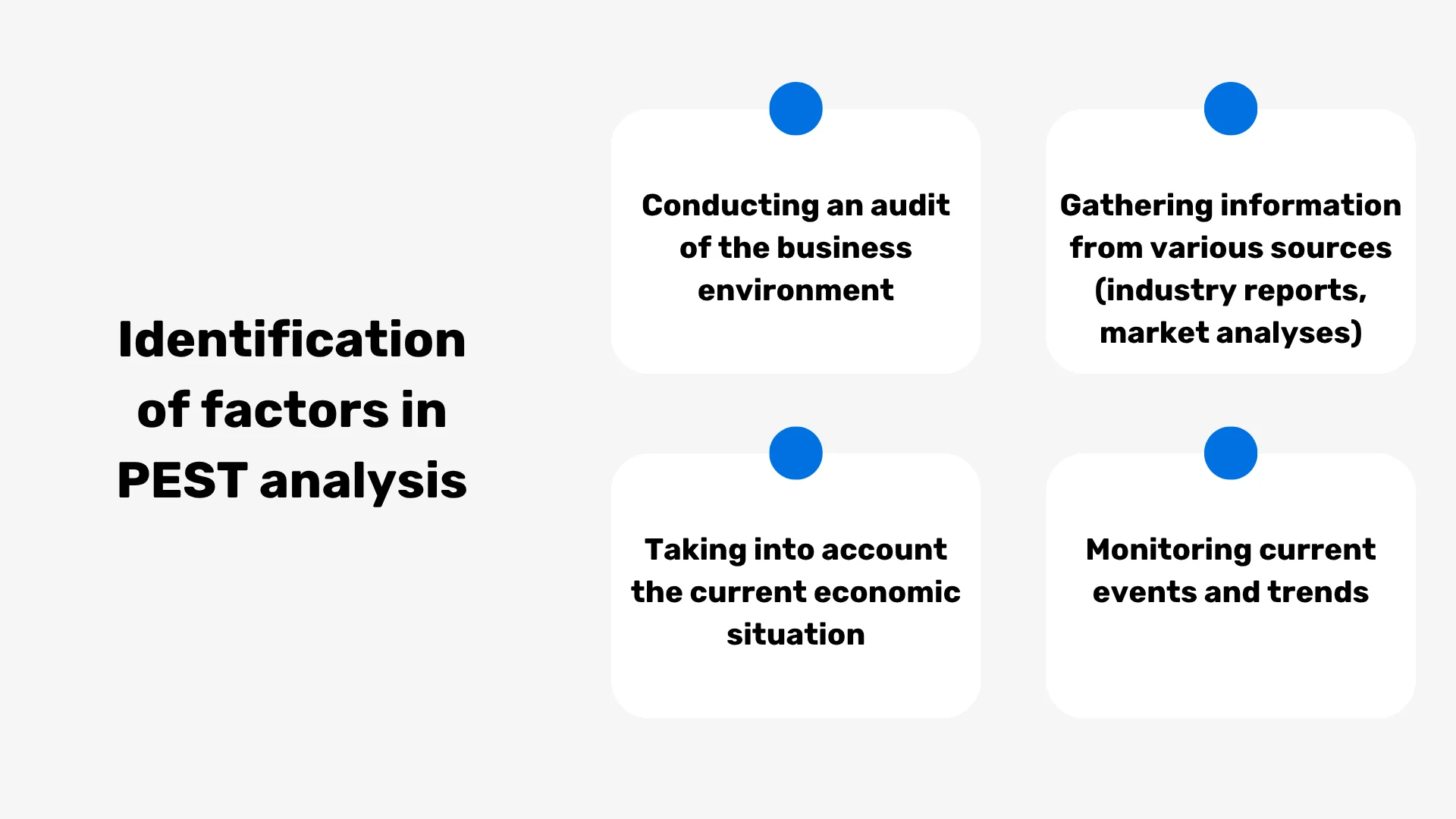
How often should you carry out PEST analysis?
PEST analysis should be carried out regularly, preferably every 6–12 months. It is worth noting that the recommended frequency of such analysis depends primarily on market conditions and the specifics of the industry in which a given company operates.
Components of PEST analysis – political, economic, social and technological factors (technological environment)
PEST analysis involves a general segmentation of the environment and the assessment of four main areas that make up the company’s macro-environment:
- Political factors (political environment) – In this part of PEST analysis, the impact of political and legal decisions on the company’s activities is assessed. Political stability and stability of government play a particularly important role, as they are key elements influencing economic activity, legal regulations and integration processes, especially in the context of PEST analysis. The analysis covers applicable regulations, tax policy, antitrust legislation and legislative changes that may significantly affect business operations. Political and legal factors also include labour law, the tax system and other regulations governing economic activity.
- Economic factors (economic environment) – Economic analysis focuses on assessing macroeconomic conditions such as business cycles, inflation, interest rates, high interest rates and economic growth. High interest rates can limit access to credit, which affects investment and innovation. Changes in tax rates, tax policy and tax regulations have a direct impact on operating costs and business profitability and may force price increases to maintain profit margins. Inflation forces companies to adjust their strategies, and its impact on consumers’ purchasing power and demand growth is crucial for planning the company’s future strategy.
- Social factors (social environment) – The social area covers changes occurring in society, such as education levels, social mobility, consumer trends, demographics and the values and preferences of consumers. Consumer behaviour, purchasing preferences, environmental awareness and customer loyalty are key to effective marketing strategies. The dynamics of social relationships and lifestyle changes can significantly affect demand and expectations towards companies, which should be taken into account in the future strategy.
- Technological factors (technological environment) – This part focuses on technological development and innovations that may affect a specific industry. New technologies, the speed of technology transfer and the introduction of new products have a direct impact on the competitiveness of companies and their ability to adapt. Monitoring these changes makes it possible to adjust the marketing strategy to dynamic technological development and to define the directions of the company’s future strategy.
Environmental factors in PEST analysis
Environmental factors are becoming increasingly important in PEST analysis, especially in the context of growing ecological awareness in society and tightening legal regulations on environmental protection. Modern organisations must take into account not only their own impact on the environment, but also consumer expectations and legislative requirements.
Examples of such factors include:
- CO2 emission standards,
- restrictions on the use of natural resources,
- requirements relating to recycling and waste management.
Including environmental factors in PEST analysis allows companies to better prepare for changes in the environment, such as the introduction of new legal regulations or growing demand for eco-friendly products. Businesses that adapt their strategies to pro-environmental trends early enough can not only minimise the risk associated with non-compliance but also gain a competitive advantage by responding to the needs of conscious consumers.
Environmental factors therefore have a direct impact on how organisations operate, and their analysis is becoming an integral part of effective strategic planning.
Where to look for analytical data for PEST analysis?
Effective PEST analysis requires access to reliable and up-to-date analytical data. In practice, companies should use a wide range of sources to build a complete picture of the factors affecting their environment. The most important include:
- official government reports,
- public statistics,
- market analyses prepared by reputable research agencies.
Valuable information can also be found in academic publications, industry reports and specialist media, which often describe the latest trends and changes in individual market segments.
Don’t forget your organisation’s own information resources!
Sales data, customer feedback and information from business partners can provide unique insights into consumer preferences and market behaviour.
It is also worth monitoring social media and internet forums, which are an excellent source of knowledge about current social trends and customer expectations. Using a variety of data sources allows for comprehensive PEST analysis and supports sound strategic decision-making.
PEST analysis step by step – stages of analysing individual environment segments
PEST analysis can be carried out as a three-stage process including identification, evaluation and conclusions, which allows you to focus on the key factors affecting the business.
Let’s discuss the three most important stages of this process.
1. Identifying the company’s environmental factors
The first step in PEST analysis is to identify the factors that may have the greatest impact on the company’s future. During this stage, within each area (political, economic, social and technological), specific factors characteristic of a given industry are identified.
2. Analysing the impact of factors on the company
The next stage is to determine how each identified factor affects the company’s operations. At this point in PEST analysis, the importance of each factor is assessed in terms of the strength of its impact. This makes it possible to prioritise and focus on the aspects that matter most. It is important to remember that some factors can significantly influence the company’s strategy and results.
3. Defining the relationship between the company and its environment
The final stage of PEST company analysis is to assess the impact of individual factors on the company’s current and future operations. At this point, conclusions are drawn that form the basis for developing specific strategic assumptions and plans. These conclusions are crucial in developing the company’s future strategy, as they allow for the inclusion of macroeconomic factors in how the company operates.
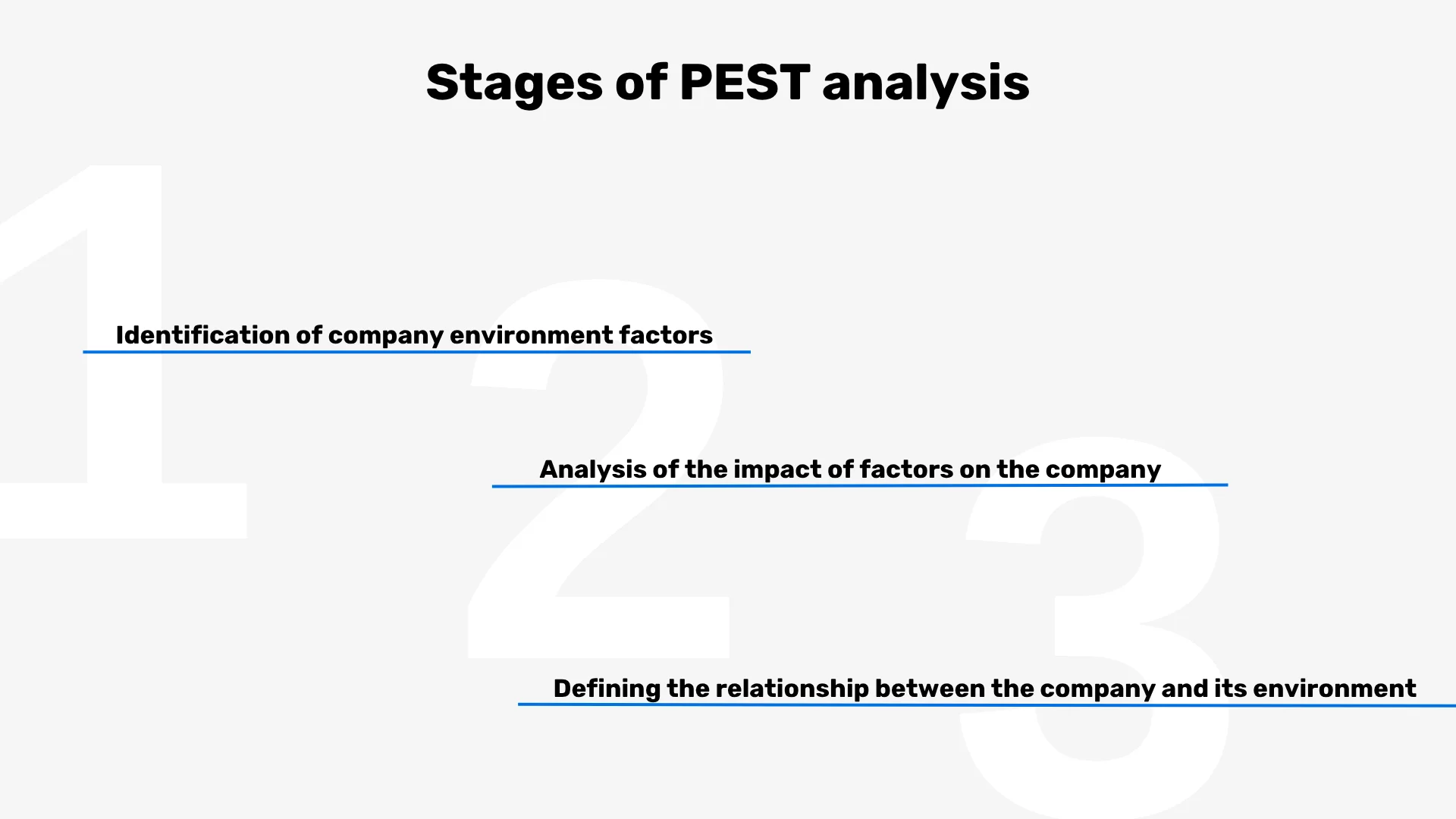
Conclusions from PEST analysis
The conclusions should identify the key threats and opportunities for the company resulting from PEST analysis. They should also indicate areas where the company can optimise its marketing strategy to leverage positive aspects of the changing business environment. This is also an opportunity to identify potential areas that require attention and corrective measures.
PEST analysis and other market analysis tools
In many cases, integrating PEST analysis with other market analysis tools, such as Porter’s Five Forces or PESTEL analysis, can increase the effectiveness of research and enable a more complete understanding of the company’s business environment. Combining different analytical methods allows you to look at the company’s environment from a broader perspective.
PEST analysis and Porter’s Five Forces – comparing the methods
While PEST analysis identifies external factors such as politics, economy, society and technology, Porter’s Five Forces analysis focuses on the internal forces of the market, such as potential competitors, buyer power, supplier power, substitutes and barriers to market entry. Combining both analyses makes it possible to see the full context of the company’s operations, including both external and internal factors affecting its competitiveness.
PEST analysis vs PESTEL analysis – differences and similarities
PEST analysis focuses on four main areas of impact (political, economic, social and technological) and deals with identifying factors in these categories. PESTEL analysis, on the other hand, expands this framework with additional areas, also including environmental and legal factors. In particular, PESTEL analysis addresses environmental aspects that are increasingly important for companies in the context of ecological regulations, environmental protection and climate challenges. It is therefore more comprehensive and covers a wider range of external aspects affecting the company.
The similarity between the two analyses lies in their main goal: identifying key external factors and understanding their impact on the company’s strategy and operations. Both methods are effective strategic tools that help businesses adapt to a changing business environment.
Would you like us to manageyour company's marketing?
Request a free quote!
Benefits of PEST marketing
PEST analysis is an invaluable aid for companies in understanding the external factors that influence their operations. It provides analytical data necessary for making informed decisions and effectively adjusting strategies to dynamic market conditions. What’s more, regular use of PEST analysis helps companies maintain profitability in a rapidly changing environment.
By conducting PEST analysis, a company can:
- Identify potential threats and opportunities arising from political, economic, social and technological factors.
- Update its marketing strategy based on the collected analytical data.
- Focus its efforts on the most strategic areas.
- Shape long-term goals using the gathered analytical data.
The importance of PEST analysis for marketing strategy
PEST analysis plays a key role in shaping an effective marketing strategy for companies, enabling a deeper understanding of the variables in the business environment.
The benefits of PEST analysis in the context of building a marketing strategy include:
- the ability to identify current trends,
- the opportunity to adapt the strategy to changes in the business environment,
- the ability to anticipate risks and recognise potential problems,
- the ability to identify new technologies and use them to optimise marketing activities.
Examples of using PEST analysis
Here are examples of companies that use PEST analysis to build their marketing strategies.
PEST analysis also enables companies to monitor the speed of technology transfer and adapt to dynamic technological changes, which is essential for maintaining a competitive advantage in the market.
Airbnb
The online platform Airbnb uses PEST analysis to update and adjust its strategy depending on current market conditions. In their case, economic factors play a key role – Airbnb closely observes, among other things, fluctuations in property prices, which have a major impact on the availability of rental offers. Changes in property prices also translate into the company’s operating costs, which requires ongoing analysis and strategic adjustments.

Apple
Apple systematically conducts PEST analysis to effectively adapt its strategy to the rapidly evolving business environment in the technology sector. For Apple, political factors are particularly important. The company operates globally and must tailor its activities to various regulations relating to copyright, patents and data security. In addition, Apple must take into account differences in legal regulations across markets, which affects how it shapes its offer and chooses distribution channels.

Recommendations for companies based on PEST analysis
The conclusions from PEST analysis should form the basis for specific recommendations for companies that want to operate effectively in a rapidly changing market environment. It is important that these recommendations cover all four analysis areas:
- political factors,
- economic factors,
- socio-cultural factors,
- technological factors.
Regularly monitoring changes in these segments makes it possible to respond quickly to emerging challenges and exploit new opportunities.
For example, if PEST analysis indicates a rise in environmental awareness among consumers, it is worth considering implementing sustainable solutions in production and communicating these actions as part of the marketing strategy.
On the other hand, when economic factors such as a decline in purchasing power or changes in interest rates affect the market, a company should adjust its offer and pricing policy to the new reality. Implementing recommendations based on PEST analysis allows not only to maintain a competitive advantage, but also to build long-term resilience to changes in the business environment.
Create your marketing strategy with Rodin
If you want to create an effective marketing strategy for your business, use the services of the professional marketing agency RodIN. The agency’s offer includes strategic marketing services that will help you implement strategic planning methods, increase sales, reach new customers and build a strong position in the market.
Book an initial consultation or take advantage of a free service quote.
